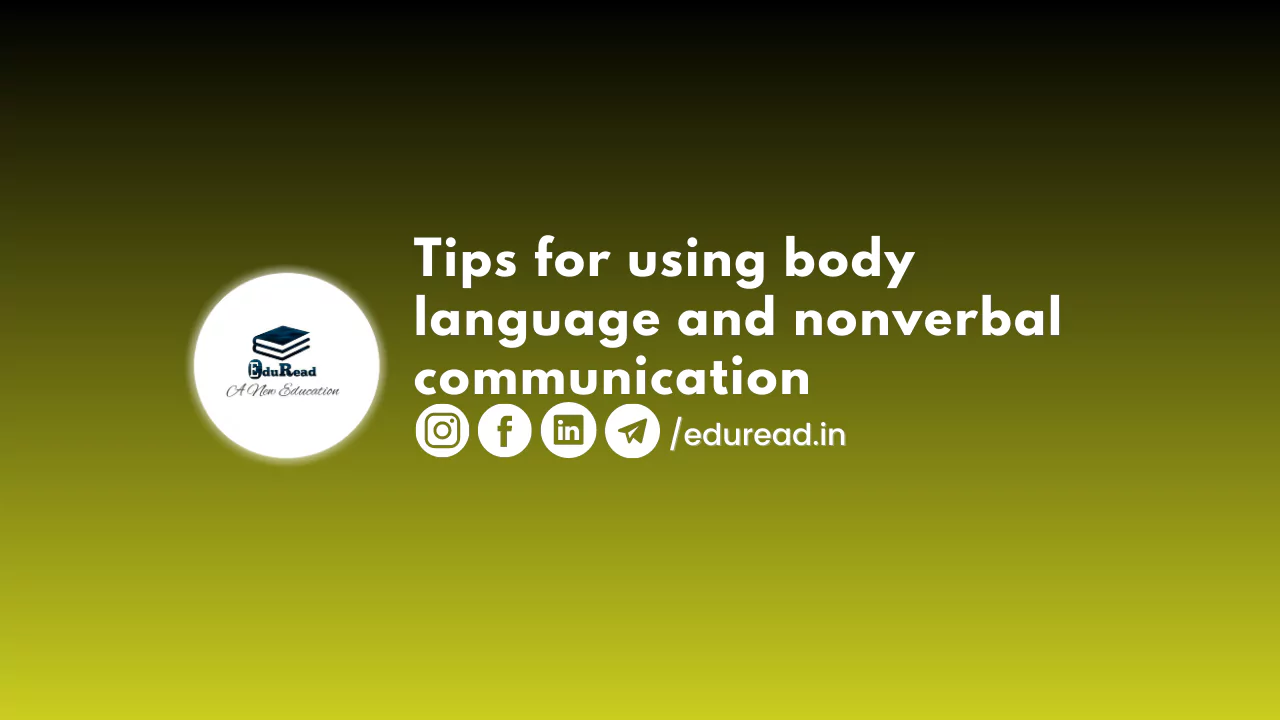Body language and nonverbal communication are powerful tools that can greatly impact our communication and interactions with others. While verbal communication is important, nonverbal cues can convey messages just as effectively, if not more so. In this blog post, we’ll discuss some tips for using body language and nonverbal communication effectively.
Section 1: Understanding Body Language
Before we dive into tips for using body language effectively, it’s important to understand what body language is and how it works. Body language refers to the nonverbal cues that we use to communicate our thoughts, feelings, and emotions. These cues can include facial expressions, gestures, posture, and even eye contact.
Tip #1: Pay Attention to Facial Expressions
Facial expressions are one of the most important components of body language. Our faces convey a wealth of information about our emotions and intentions. Pay attention to your own facial expressions, and be mindful of how they may be interpreted by others.
Tip #2: Use Gestures Appropriately
Gestures can be a powerful tool for emphasizing a point or conveying a message. However, it’s important to use gestures appropriately and in moderation. Too many gestures can be distracting, while too few can make you appear stiff and unapproachable.
Tip #3: Maintain a Good Posture
Good posture can convey confidence and authority while slouching or hunching over can make you appear timid or uninterested. Pay attention to your posture, and make an effort to stand up straight and engage your core muscles.
Section 2: Nonverbal Communication in Interpersonal Relationships
Nonverbal communication is especially important in interpersonal relationships, where it can impact our ability to connect with others and build trust. Here are some tips for using nonverbal communication effectively in relationships:
Tip #4: Make Eye Contact
Eye contact is an important aspect of nonverbal communication, as it conveys interest, attention, and respect. When speaking with someone, make an effort to maintain eye contact, but be careful not to stare too intensely.
Tip #5: Mirror the Other Person’s Body Language
Mirroring is a technique that involves mimicking the other person’s body language and nonverbal cues. This can help establish rapport and build trust, as it conveys a sense of understanding and empathy.
Tip #6: Pay Attention to the Tone of Voice
While nonverbal communication refers primarily to body language, tone of voice is also an important component. Pay attention to the tone of your own voice, and be mindful of how it may be interpreted by others.
Section 3: Nonverbal Communication in the Workplace
In the workplace, nonverbal communication can impact our ability to communicate effectively with coworkers, managers, and clients. Here are some tips for using nonverbal communication effectively in a professional setting:
Tip #7: Dress Appropriately
Your attire can convey a lot about your professionalism and work ethic. Dress appropriately for your workplace, and be mindful of how your clothing choices may be perceived by others.
Tip #8: Maintain Good Eye Contact
As mentioned earlier, eye contact is an important aspect of nonverbal communication. In the workplace, maintaining good eye contact can convey confidence and authority, while also building trust with coworkers and clients.
Tip #9: Use Open Body Language
Open body languages, such as uncrossed arms and an upright posture, can convey approachability and openness to communication. Avoid closed body languages, such as crossed arms or a slumped posture, which can convey defensiveness or disinterest.
Tip #10: Practice Active Listening
Active listening involves not only paying attention to the words being spoken but also to the nonverbal cues being conveyed. Practice active listening by maintaining eye contact, nodding in agreement, and responding appropriately to the speaker’s nonverbal cues. This can help build trust and understanding in the workplace.
Section 4: Overcoming Challenges with Nonverbal Communication
While nonverbal communication can be a powerful tool, it’s not always easy to use effectively. Here are some tips for overcoming common challenges with nonverbal communication:
Tip #11: Be Aware of Cultural Differences
Nonverbal cues can vary widely across different cultures. Be aware of cultural differences in nonverbal communication, and make an effort to adapt your own communication style accordingly.
Tip #12: Practice Self-Awareness
Self-awareness is key to using nonverbal communication effectively. Pay attention to your own nonverbal cues, and be mindful of how they may be interpreted by others.
Tip #13: Seek Feedback
Seek feedback from coworkers, friends, or family members on your nonverbal communication skills. This can help you identify areas for improvement and make adjustments accordingly.
Conclusion:
Body language and nonverbal communication are powerful tools that can greatly impact our communication and interactions with others. By understanding and using these cues effectively, we can build stronger relationships, establish trust, and communicate more effectively in a variety of settings. Remember these 13 tips for using body language and nonverbal communication effectively, and practice incorporating them into your daily interactions.
Follow Us for more such content to improve your speaking skills:
To know more, check out here: https://eduread.in/english-vocabulary-for-fruits-speak-new-york/
And visit us for more.
